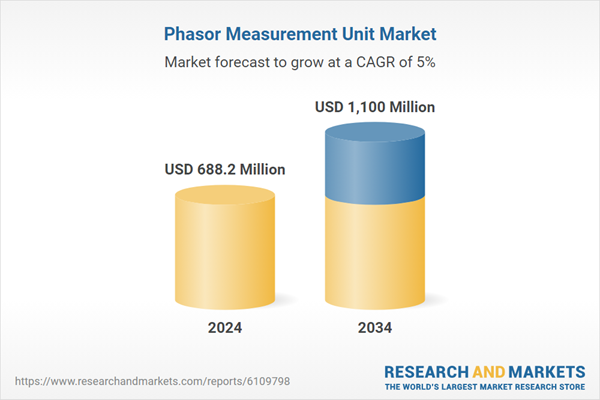As power networks become more decentralized and complex, the use of PMUs is accelerating, particularly in emerging markets where energy demand continues to rise. Technological innovations are making PMUs more efficient, scalable, and affordable. Enhanced performance in measurement precision, data processing, and communication technologies is empowering utilities to leverage predictive maintenance and better grid forecasting through advanced analytics and smart grid management systems. The evolution of these systems is playing a significant role in expanding the global adoption of PMUs across both developed and developing regions.
The software segment of the Phasor Measurement Unit Market is forecasted to generate USD 425 million by 2034, with its growth driven largely by the integration of cutting-edge data science tools and artificial intelligence models. These tools allow utilities to carry out real-time fault detection, proactive grid monitoring, and condition-based maintenance strategies with higher efficiency. Improved software platforms offer deeper insights into operational data, helping utilities make informed decisions that enhance overall grid performance.
Meanwhile, the state estimation application segment is expected to generate USD 277 million by 2034. With the increased integration of renewable sources, distributed energy systems, and digital technologies, power grids are becoming more intricate. This complexity heightens the potential for system anomalies, making accurate and continuous state estimation essential to maintain system reliability and prevent failures.
United States Phasor Measurement Unit Market generated USD 129.2 million in 2024. This progress is attributed to sustained investments in smart grid technologies, grid infrastructure upgrades, and the growing need for advanced, real-time measurement systems. As the country continues to push for clean energy transformation, PMUs are playing a pivotal role in enabling more resilient and adaptive grid operations.
Key players contributing to the competitive landscape in the Global Phasor Measurement Unit Market include Siemens, Powerside, STER (Studio Elektronike Rijeka) Ltd., Electric Power Group, GE Vernova, Valiant Communications, Schneider Electric, Schweitzer Engineering Laboratories, Inc., Hitachi, Qualitrol Corp, and Arbiter Systems. Key strategies adopted by companies in the phasor measurement unit market to strengthen their presence include a strong focus on innovation and collaboration. Leading players are investing in research and development to enhance PMU precision, cost efficiency, and integration with next-generation grid systems. Companies are also forming strategic alliances with utilities and technology firms to develop scalable software platforms and smart grid solutions. Many firms are expanding their geographic reach through partnerships and acquisitions, especially in rapidly developing markets.
Comprehensive Market Analysis and Forecast
- Industry trends, key growth drivers, challenges, future opportunities, and regulatory landscape
- Competitive landscape with Porter’s Five Forces and PESTEL analysis
- Market size, segmentation, and regional forecasts
- In-depth company profiles, business strategies, financial insights, and SWOT analysis
This product will be delivered within 2-4 business days.
Table of Contents
Companies Mentioned
- Arbiter Systems
- Electric Power Group
- GE Vernova
- Hitachi
- Powerside
- Qualitrol Corp
- Schneider Electric
- Schweitzer Engineering Laboratories, Inc.
- Siemens
- STER (Studio Elektronike Rijeka) Ltd.
- Valiant Communications
Table Information
| Report Attribute | Details |
|---|---|
| No. of Pages | 123 |
| Published | June 2025 |
| Forecast Period | 2024 - 2034 |
| Estimated Market Value ( USD | $ 688.2 Million |
| Forecasted Market Value ( USD | $ 1100 Million |
| Compound Annual Growth Rate | 5.0% |
| Regions Covered | Global |
| No. of Companies Mentioned | 11 |









